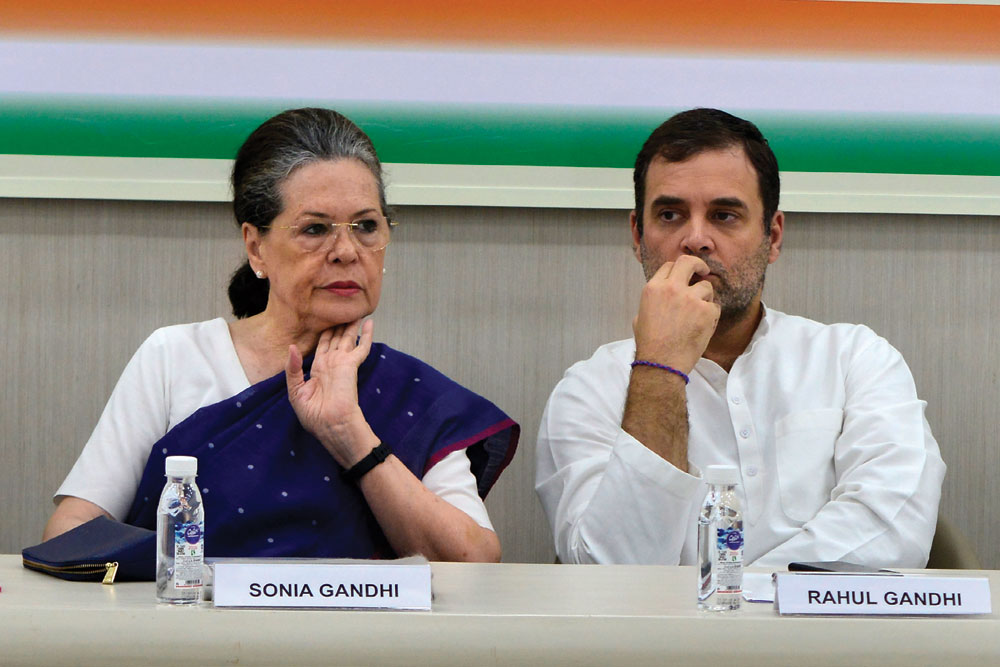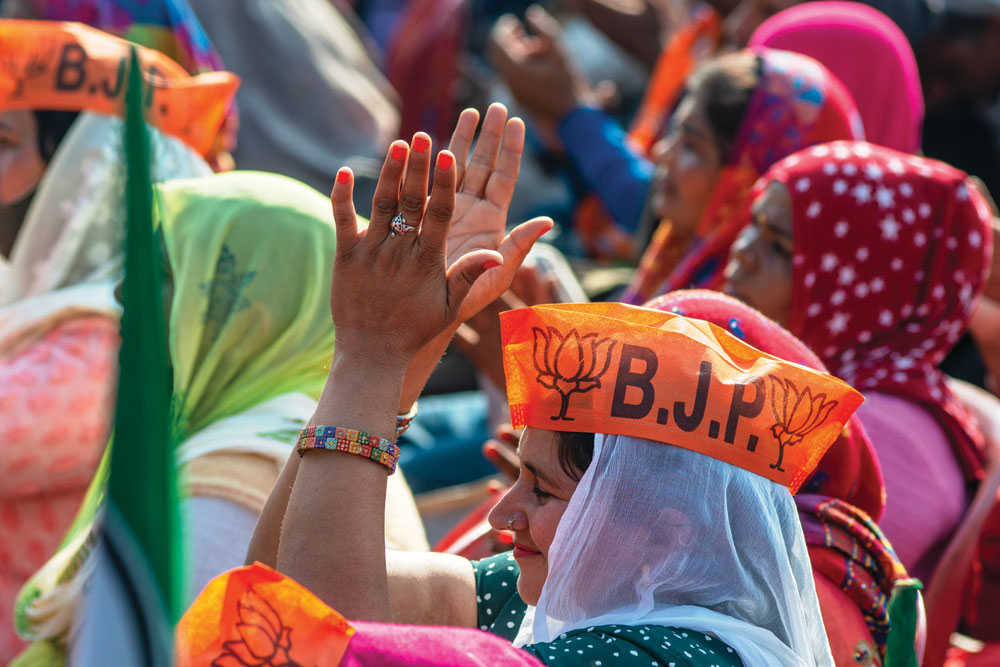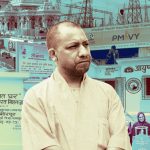The Mind of the Permanent Winner
Why Narendra Modi is the mothers’ choice
/wp-content/uploads/2022/03/Permanentwinner1.jpg)
Prime Minister Narendra Modi at the BjJP Headquarters in New Delhi, March 10, 2022 (Photo: Getty Images)
A WEEK, AS EVERYONE has heard, can be a long time in politics. A year, conversely, might be a very short time in politics. Witness the sensational change in the landscape during the 12 months between Bengal 2021 and Uttar Pradesh 2022.
Drama is the lifeblood of Indian democracy’s thriving theatre. Every General Election sets the stage for the next play. For Prime Minister Narendra Modi, the slings and arrows of outrageous fortune appeared in sudden profusion just as he was getting into stride after the handsome mandate of 2019.
A second term in office is always more difficult than the first, for while the mandate has doubled, expectations have quadrupled. Prime Minister Modi is no stranger to this syndrome, having served three terms as chief minister of Gujarat. But nothing in his past could have prepared him for the challenges that descended upon India, and indeed the world, literally out of thin air. Covid was on no one’s horizon.
Covid was an economic crisis wrapped in medical dread, generating horrific memories, visceral images, and existential fears. With bodies floating along the Ganges, poor health infrastructure and a regional administration which sometimes seemed in denial about lost employment, Uttar Pradesh (UP) became electorally vulnerable. On the other hand, Modi reinforced his credibility as guardian of the poor in this calamity through a free-food programme for the impoverished in a time of existential need. Indian women are the biggest consumers of welfare and development, for they assume responsibility for the home kitchen. An Indian mother will always be the last person to eat in a marginal-income family. For these mothers, Covid sustenance was manna from Modi. They stood by the prime minister when he asked for their vote in a UP election that was closer than raw numbers might suggest. The Bharatiya Janata Party’s (BJP) victories in four states were a resounding endorsement of the prime minister’s commitment and leadership.
Mamata Banerjee finessed this Modi asset in the 2021 Bengal Assembly elections by positioning herself as a woman first, and chief minister later. This was the visual and literal message on her hoardings. In hoardings and speeches, she became the younger sister to older women and elder sibling to the young. She has always identified herself with the poor and once again used that psychological link successfully. This persona remains her singular advantage over competitors in the great game of finding a face to project as an alternative prime minister in the next General Election. Her advocates have not yet made this argument in the national discourse, possibly because they have not thought of it.
In a strange, almost inexplicable phenomenon, opposition parties that are very successful in states seem to lose the plot when they aspire for the Centre. Their thinking has, historically, subsisted on thin arithmetic. This was as true when Congress seemed invulnerable as it is now when Narendra Modi has become the dominant fact of Indian politics.
There is no attempt at serious introspection, let alone accountability. On the barren fields of intellectual inertia, the triumvirate of Sonia Gandhi, Priyanka Gandhi and Rahul Gandhi continues to believe that all Congress needs to do is come up for air at election time
The error is elementary. They have programmed themselves into believing that they lose a General Election because they do not unite against the ruling establishment. This is, at best, a very limited factor. They flounder not because of political disunity, but because of economic incoherence. A simple reference to common sense would confirm that an alliance must be held together by an economic policy beyond the promise of rewards for a partisan core base. Parties within an alliance can then prove the efficacy of their programme by implementing it in the states that they rule. Prime Minister Modi won the trust of voters across the map because he had made development synonymous with his image in Gujarat. Voters were confident in 2014 that the Gujarat Model would be replicated across the country.
A government has the advantage of being defined by what it does; an opposition is recognised by what it promises to do. It is a misconception to believe that the second is easier than the first. The promise must be credible.
Mamata Banerjee, energised by victory in 2021, spent the next 12 months touring the country in spasms in a bid to expand her presence and bolster her bid for Delhi. She thought she could conquer the old Portuguese colony of Goa from the birthplace of the British Raj by sending subordinates who could speak English. You cannot stitch a persuasive narrative from yarn. Mamata Banerjee might have been better served if she had invited potential allies to a Calcutta Conclave to hammer out a common economic and social policy framework. Politics alone is not adequate for political success.
This is universally true of democracies, whose elections are driven by aspiration. The most formidable example, to my mind, was that of a then young American Democrat Bill Clinton, who pulled off an amazing upset in the elections of 1992 against the seasoned Republican George Bush (the Elder), leading by nearly 20 per cent in the opinion polls at the start of the campaign. Clinton paraded a single sentence: “It’s the economy, stupid!” Economic welfare was and remains the principal vote-fetcher. It’s ideas, ideas, ideas; not politics, politics, politics.
THE ONLY VIRTUE left in the Indian National Congress is consistency: it gets weaker in every election. Each post-mortem is a tired search for alibis to protect the presiding fading dynasty. The party has lost the ability to demand or strategise change. This is hugely ironic, because Indira Gandhi, the fountainhead of the present dispensation, first invented and then reinvented herself in 1969 and 1978 to resurrect a sinking contraption. And so Sonia Gandhi flicks away questions about the traumatic loss of Punjab by the counterfactual explanation that the problem lay not in removing a perfectly estimable chief minister, Amarinder Singh, but in not sacking him earlier. All adjacent heads nod sagely in obedient agreement.

Rahul Gandhi mentions “youth” and there are cheers all around, as if youth is a doctrine rather than the young being a beneficiary of governance. Amarinder Singh’s analysis was sharp: Congress had blundered and “dug its own grave in the border state the day it decided to back an unstable Navjot Singh Sidhu as state chief and a corrupt Charanjit Singh Channi as chief minister months before the polls…Congress has lost not only in Punjab but also in UP, Uttarakhand, Goa, and Manipur; and the Gandhis are entirely to blame for the party’s shameful defeat. People have lost faith in their leadership”. These are self-evident truths. But Amarinder Singh is now an outsider in an environment which is desolate both inside and outside.
There is no attempt at serious introspection, let alone accountability. On the barren fields of intellectual inertia, the triumvirate of Sonia Gandhi, Priyanka Gandhi and Rahul Gandhi continues to believe that all Congress needs to do is come up for air at election time, and the voter will sing hosannas. Those who disagree, like the presumed group known as ‘G23’, sulk in the privacy of their homes or take whatever little satisfaction is available through elliptical tweets.
Everyone seems trapped in the coma induced by a dynasty that has lost its raison d’être but refuses to recognise reality. Rahul Gandhi is not an alternative to Narendra Modi for the people of India, except in the fancies of his coterie. The only effective sound you hear from the Congress office is that of doors being slammed after the exit of yet another leader. Even a CM Ibrahim in Karnataka has had enough. Those who took a similar decision earlier, from Assam’s Himanta Biswa Sarma to Madhya Pradesh’s (MP) Jyotiraditya Scindia, have found another niche.
Unbelievably inept decisions by Rahul Gandhi handed Congress space in Punjab to Arvind Kejriwal. Kejriwal’s strategy is uncomplicated: displace Congress to replace BJP. He is a lone ranger in the style of Vishwanath Pratap Singh, confident that success begets success. This may be true, but the question is of pace. It has taken seven years for Kejriwal to add Punjab to Delhi; how long will he have to wait for a third bastion? A circumference of 18 Lok Sabha seats is not sufficient as a launchpad for the prime minister’s job. VP Singh started with UP and much of Bihar as his operational base.
Indian women are the biggest consumers of welfare and development. For them, Covid sustenance was manna from Modi. They stood by the Prime Minister when he asked for their vote in an Uttar Pradesh election that was closer than raw numbers might suggest
Real time can exist on a separate dimension from the calendar. The most difficult challenge before Prime Minister Modi after his personal triumph in the Assembly polls is the real time he has left before 2024. On paper, there are two years to go before the next General Election. Once you start measuring the time left for actual governance, the calendar shrinks. Campaigning for the 2023-24 electoral season will begin after Deepavali 2023, since winter polls in Rajasthan, MP and Chhattisgarh precede the General Election in the summer of 2024.
Counting from April, this leaves about 20 months in which to mend the tatters caused by two upheavals.
If Covid could not be foreseen, neither could Ukraine. The economic shock of the former has merged with the economic disruption of the latter to hit Indians where it matters most, in employment and prices. The rising price of fuel might stabilise with agreement on a new status quo on Ukraine, but the new normal will be significantly higher than oil prices in the first week of December 2021. The consumer cannot be protected from this escalation, nor can the government increase taxes on oil to finance emergency expenditure like free food. The economic recovery from Covid was never going to be easy; Ukraine has made it more difficult. We are only now beginning to see a worldwide rise in foodgrain prices, while Russia’s decision to stop the export of crucial elements like palladium and titanium in response to Western sanctions will affect the costs of a range of consumer products from computers to cars. Inflation is creeping towards double digits in America and Britain, a problem they have not witnessed in more than four decades.
The warning signs are all over the place in our country: on Friday, March 11, Kristalina Georgieva, managing director of the International Monetary Fund (IMF), said in Washington that while India had been good at managing its finances, the post-Ukraine rise in oil prices would have a negative impact on its economy.

Simultaneously, in Mumbai, the deputy governor of the Reserve Bank of India, Michael Patra, pointed out that the growth story had become as weak as it was in 2013 even as “recent geopolitical developments” posed an “upside risk”. From Delhi, on the same day, data released by the National Statistical Office (NSO) indicated that industrial growth remained “sluggish” at 1.3 per cent. As I write this, India’s consumer behemoths have announced an average 5 per cent rise in prices of daily-use commodities like milk, tea and the new favourite of the upwardly mobile—noodles. Companies blamed this on inflation in costs. Inflation breeds further inflation.
The most difficult challenge before Prime Minister Modi after his personal triumph in the assembly polls is the real time he has left before 2024. He will need radical ideas for quick economic revival, driven by the private sector, the one engine which can deliver quickly in the right conditions
Prime Minister Modi knows that he will need to take some tough decisions. He now has the political strength to do so. He will need radical ideas for quick economic revival, driven by the private sector, the one engine which can deliver quickly in the right conditions. Incentives do not have to be merely financial. Indeed, they should be conceptual. Here is a layman’s suggestion: Can 20 large private corporations be contracted to build 10,000 inexpensive model residences each within 12 to 16 months in the 20 poorest districts at a pre-fixed price, with a reasonable tax-free profit of perhaps 3 or 4 per cent? This would supplement government construction for the homeless at private-sector pace. Time, as mentioned, is at a premium. If any government puts an idea on paper today it takes at least six months before the project can break ground.
If the past year disappeared in a flash, the next year will be even shorter.

/wp-content/uploads/2025/01/Cover_Kumbh.jpg)














More Columns
The lament of a blue-suited social media platform Chindu Sreedharan
Pixxel launches India’s first private commercial satellite constellation V Shoba
What does the launch of a new political party with radical background mean for Punjab? Rahul Pandita